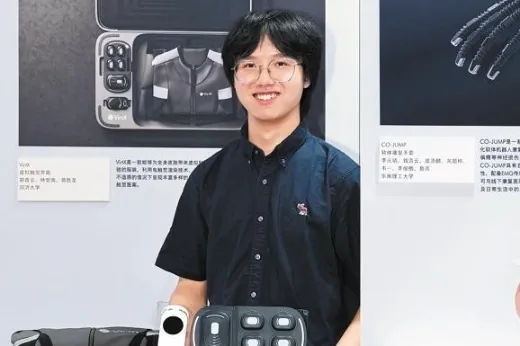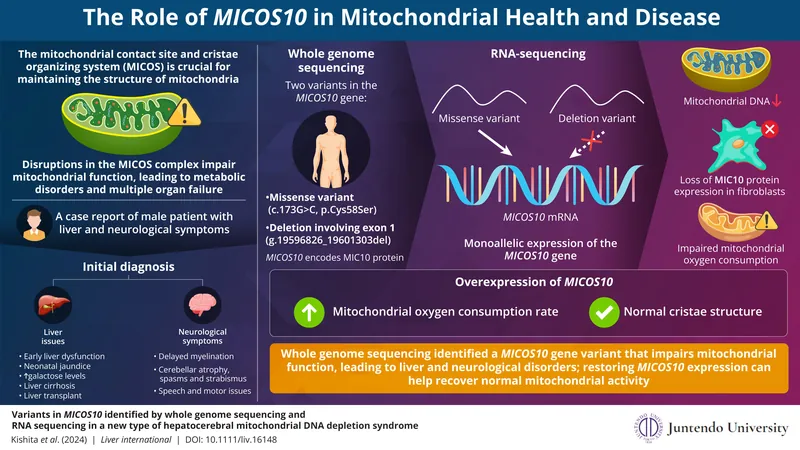
Revolutionary Suit Transforms Sound into Touch for the Deaf Community!
2024-11-26
Author: Wei Ling
A New Era in Accessibility
A groundbreaking development is unfolding in the realm of accessibility as Zheng Qingyun and his innovative team embark on a mission to empower the deaf community to experience rich and immersive sound through the sense of touch. Their revolutionary creation, VirtX, is a tactile suit that utilizes cutting-edge textiles to translate sound waves into high-resolution tactile sensations.
Innovative Technology
Over the past two years, Zheng and his team have harnessed advanced electrohaptic rendering technology that creates dynamic and detailed tactile patterns in response to various sounds. This pioneering suit allows individuals who are deaf to not only detect sound but also perceive it spatially – transforming how they interact with the world around them.
Hearing Loss Statistics
According to the World Health Organization, more than 1.5 billion people globally live with hearing loss, a figure expected to surge to over 2.5 billion by 2030. In China alone, approximately 206 million people, or over 15% of the population, face some form of hearing impairment, reported by China National Radio, based on a comprehensive survey conducted by the China Disabled Persons' Federation.
The Vision Behind VirtX
Zheng, a 24-year-old postgraduate student at Tongji University in Shanghai, shared, "Our entire team is passionate about enhancing human-machine interaction, leading us to develop a product that complements hearing through haptic feedback." Unlike traditional research that primarily explores hard materials, Zheng's team delves into the integration of soft textiles into human-machine interaction, designing innovative garments where each thread is connected to a switch, creating a responsive interface.
Transformative Potential
This could prove transformative for many. Zheng explained that clothing as a medium for interaction allows for a seamless incorporation into daily life, improving the overall quality of life for individuals facing auditory challenges. Initially aimed at assisting those with both visual and hearing impairments, the technology effectively provides complementary experiences through haptic feedback.
Reversible Fabric Design
Moreover, the reversible fabric design of the VirtX suit enables tactile sensations to be felt both inside and outside the garment, assisting not only the deaf but also individuals with partial sight. Zheng pointed out a common challenge for the deaf community: the difficulty in discerning the direction of sound, which significantly impacts their perception of their environment. For instance, while a vehicle passes by, ordinary individuals can gauge its location and distance through sound—an ability that body-worn technology like VirtX aims to replicate through tactile input.
Enhancing Quality of Life
"Our full-body virtual haptic interface aims to offer sensory support by converting sound waves into tactile feedback, thereby dramatically enhancing the quality of life for those who are deaf," Zheng stated. He expressed hope that this integration into wearable technology could provide new sensory experiences, allowing users to connect with the world in a profound way.
Challenges and Opportunities
Despite the tremendous promise of commercialization, Zheng acknowledged that there are still hurdles to overcome. Market feedback has motivated his team to explore applications beyond just one targeted group, seeking opportunities for broader social engagement and interactions. Discussions with various enterprises have sparked ideas for applying VirtX technology in entertainment, specialized training, and even medical contexts.
Recognition and Future
The success of this groundbreaking innovation was recognized when the design team received the prestigious top prize at the James Dyson Award in China's mainland this year, solidifying their position at the forefront of assistive technology. As they continue to innovate, the future looks bright for those hoping to bridge the gap between sound and the deaf experience—one tactile pulse at a time!





 Brasil (PT)
Brasil (PT)
 Canada (EN)
Canada (EN)
 Chile (ES)
Chile (ES)
 España (ES)
España (ES)
 France (FR)
France (FR)
 Hong Kong (EN)
Hong Kong (EN)
 Italia (IT)
Italia (IT)
 日本 (JA)
日本 (JA)
 Magyarország (HU)
Magyarország (HU)
 Norge (NO)
Norge (NO)
 Polska (PL)
Polska (PL)
 Schweiz (DE)
Schweiz (DE)
 Singapore (EN)
Singapore (EN)
 Sverige (SV)
Sverige (SV)
 Suomi (FI)
Suomi (FI)
 Türkiye (TR)
Türkiye (TR)